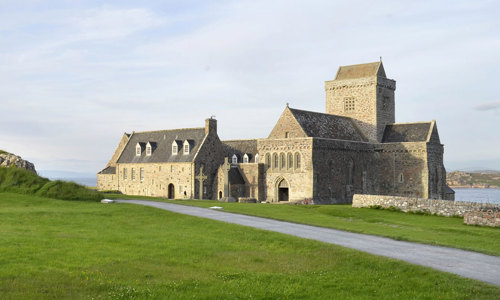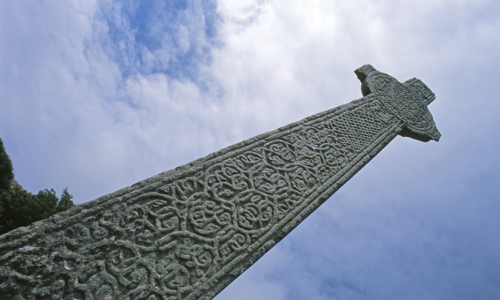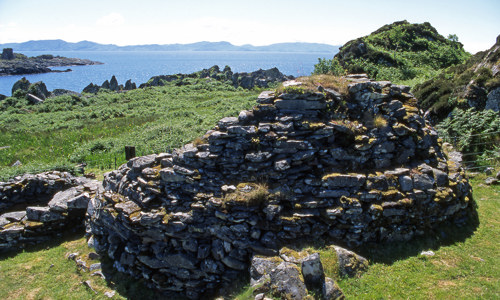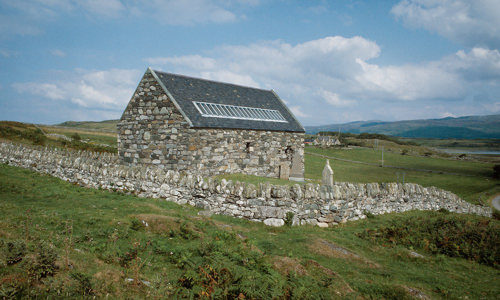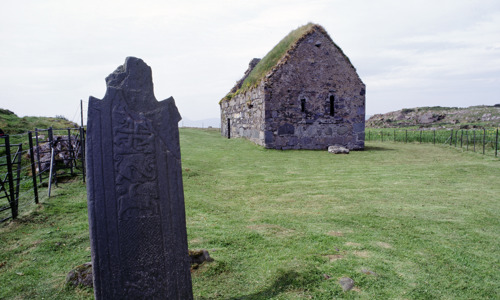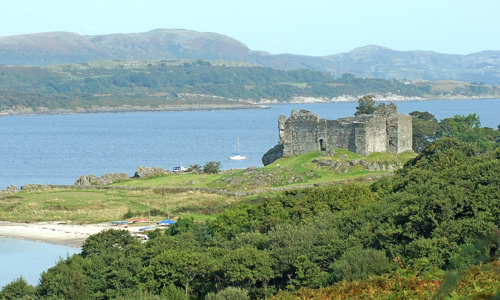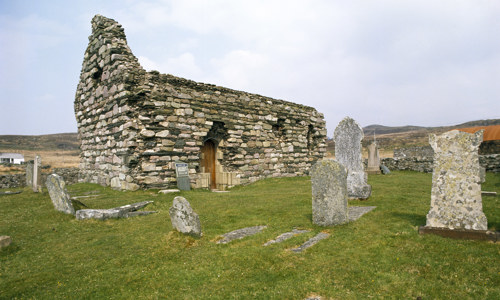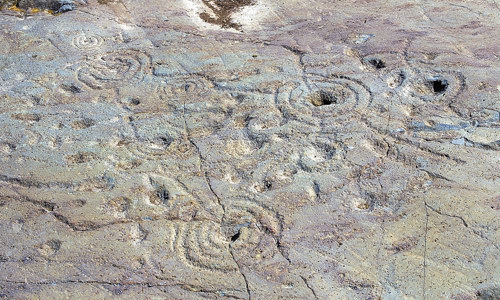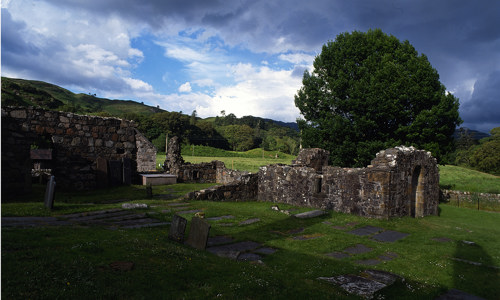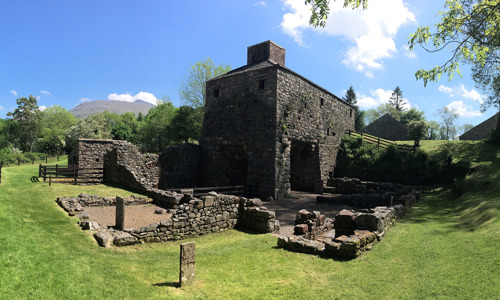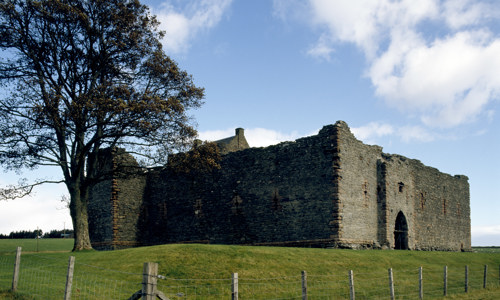History
Early foundations?
Inchkenneth Chapel was dedicated to Kenneth of Aghaboe, a contemporary of St Columba, who lived in the AD 500s. No evidence for an early Christian monastery on the island survives, however.
The chapel was built in the 1200s, and was probably no longer a regular place of worship by 1549. However, the burial ground remained in use until the 1800s. It’s said Scottish kings were buried here when stormy seas prevented safe passage to Iona, but this is just a legend.
Monumental sculpture
Leaning against the west wall are eight grave-slabs carved in the West Highland style and dating from between the 1300s and 1500s. Six of the eight have been identified as being similar to work found on Iona.
The grave-slabs feature a variety of emblems and motifs. One shows a figure holding a mitre, probably an abbot or bishop.
A fine collection of memorials stand in the churchyard. Monuments there include:
- a decorated Latin cross, made of slate and 1.48m high
- an effigy depicting an armed man, wearing medieval clothes but a 1600s helmet, clutching a cannonball
A simple place of worship
Inchkenneth Chapel is like many medieval churches in the Highlands – small, sparsely lit and simply arranged. The nave of the church is almost completely devoid of architectural elaboration, and the division between the nave and chancel is now marked by a single step down.
The base of an altar and two aumbries (cupboards) remain in the chancel, where projecting stones may have been brackets for holy images or lamps.


